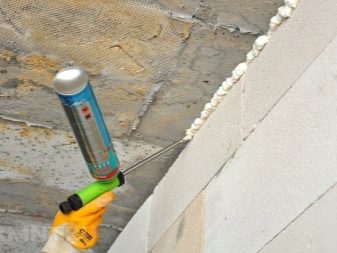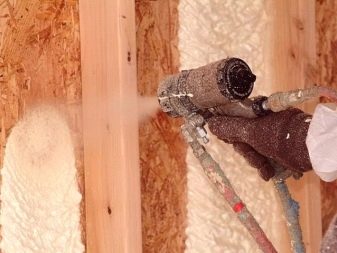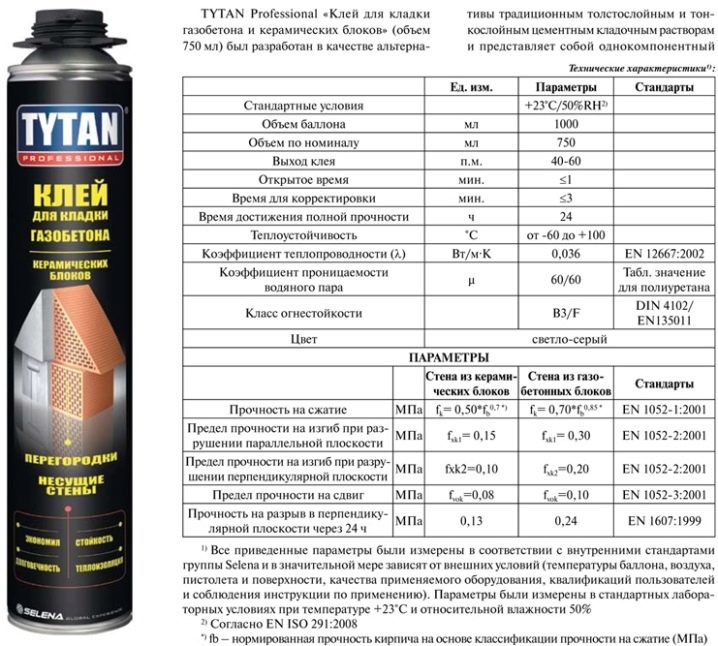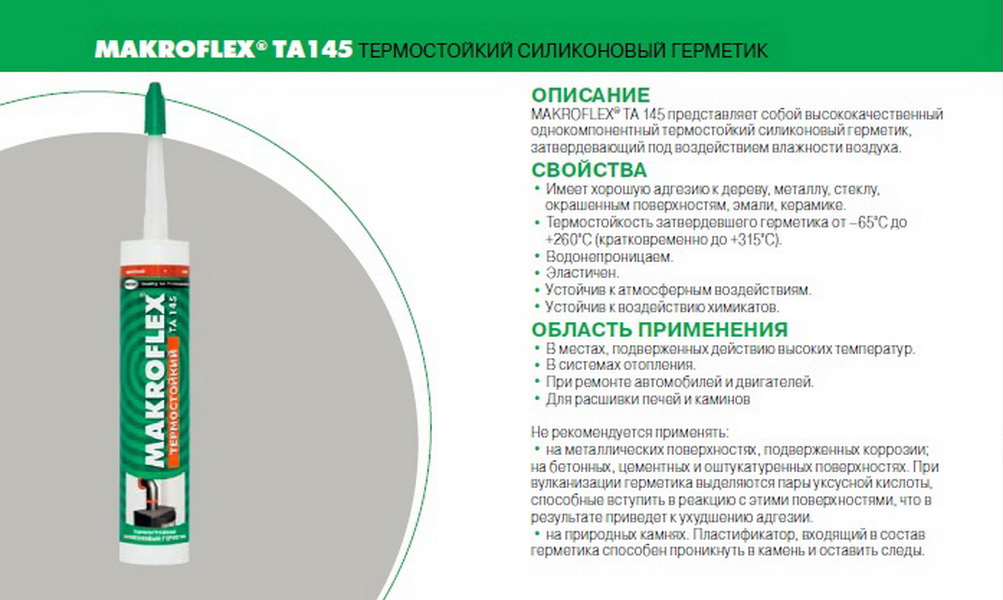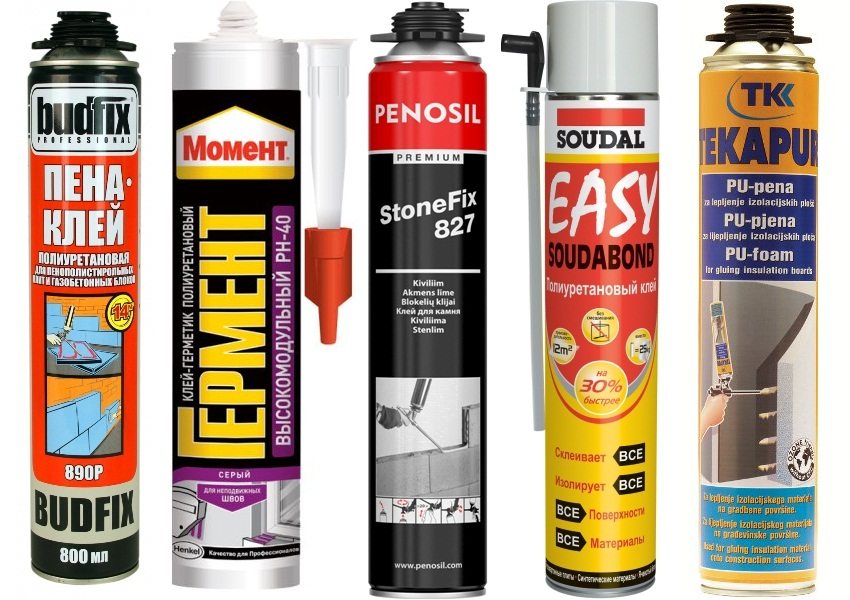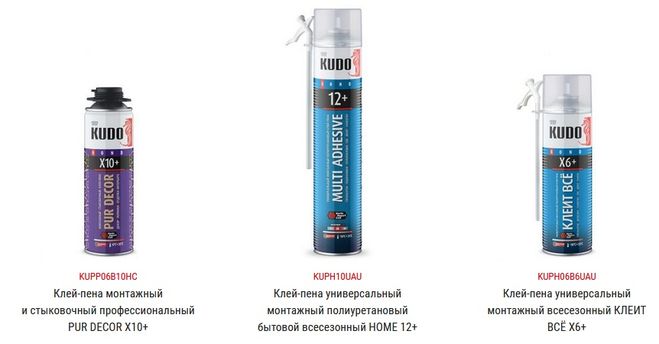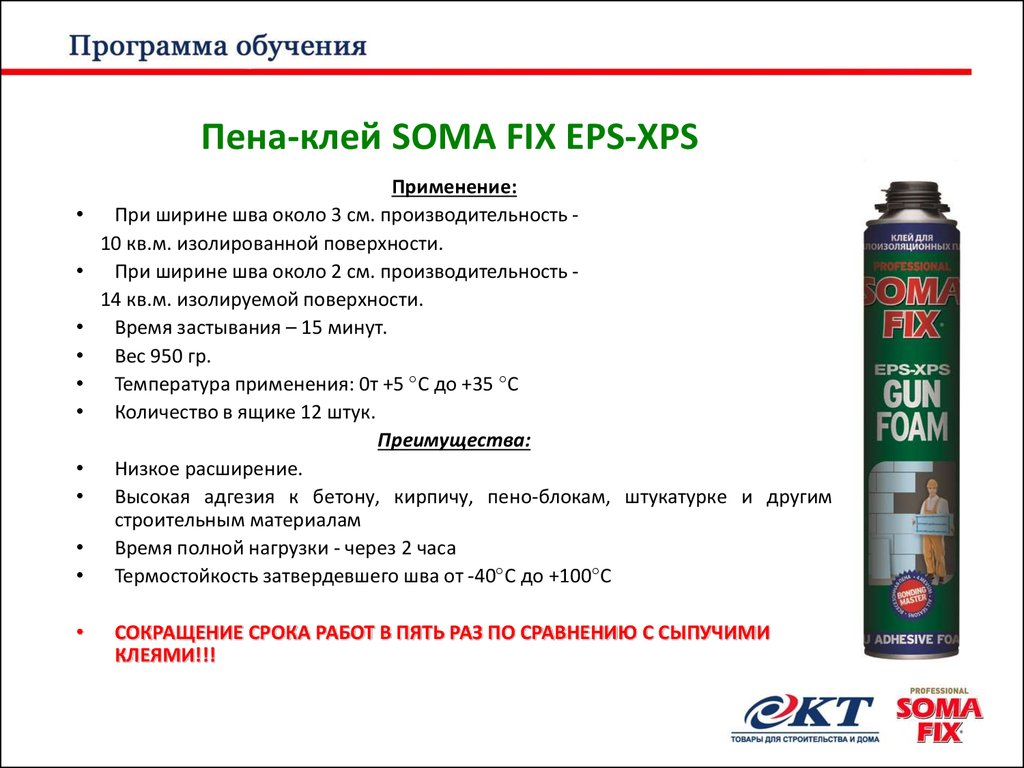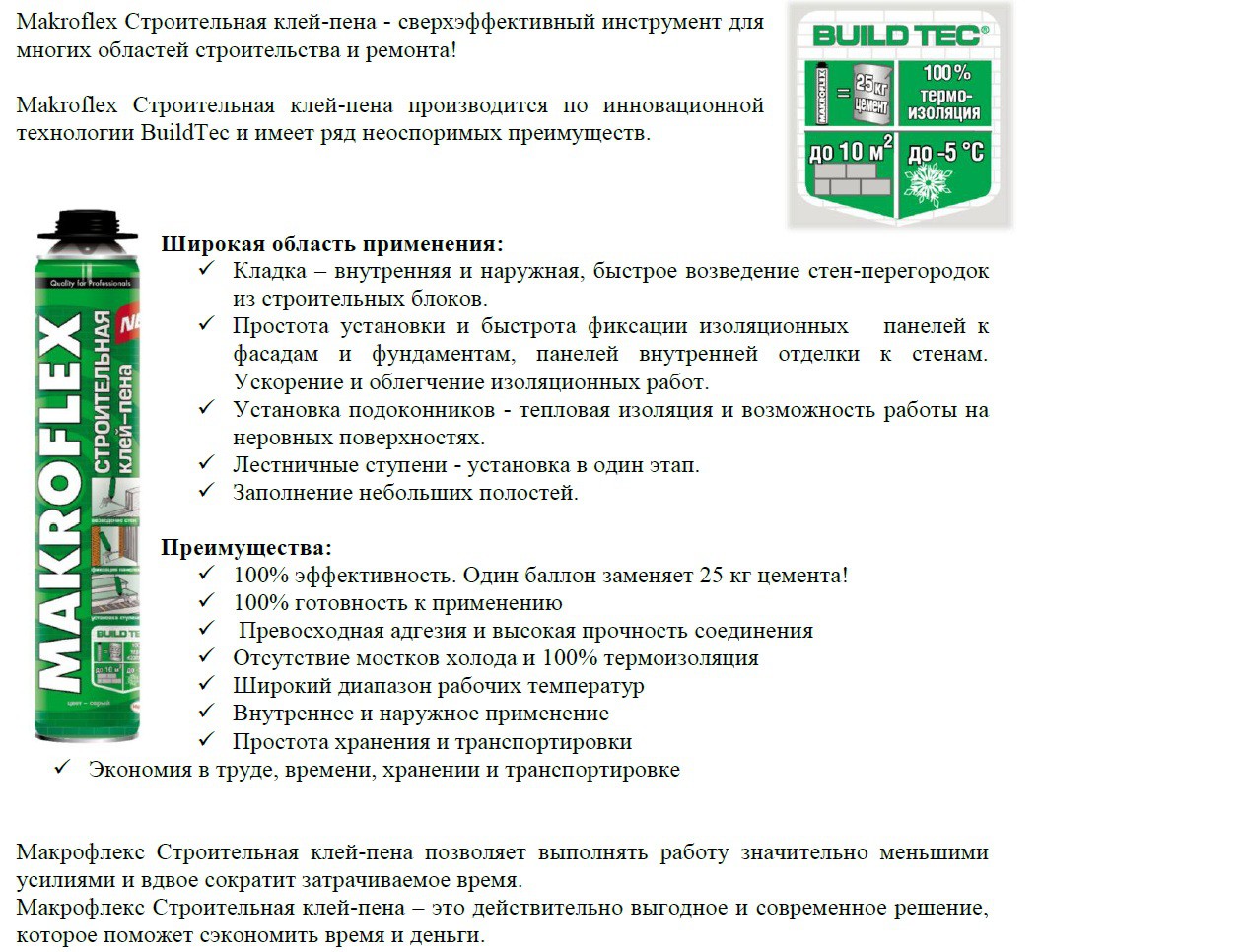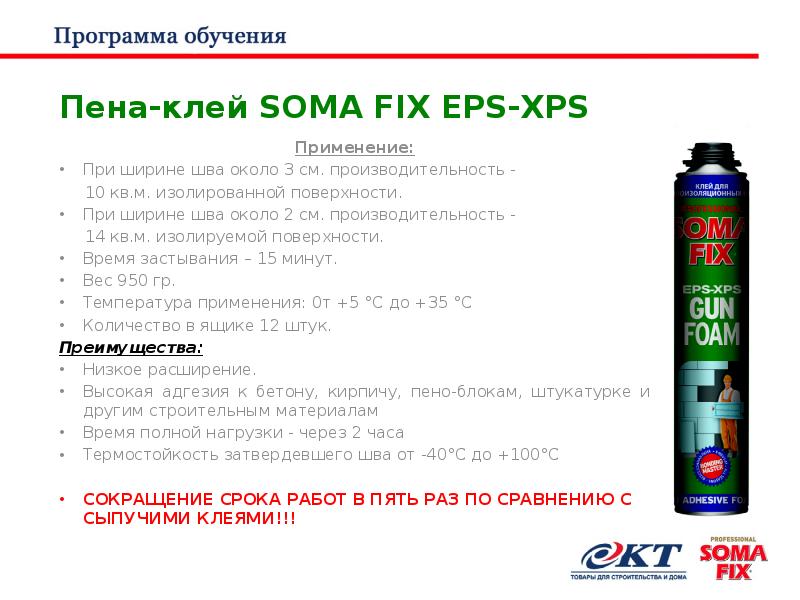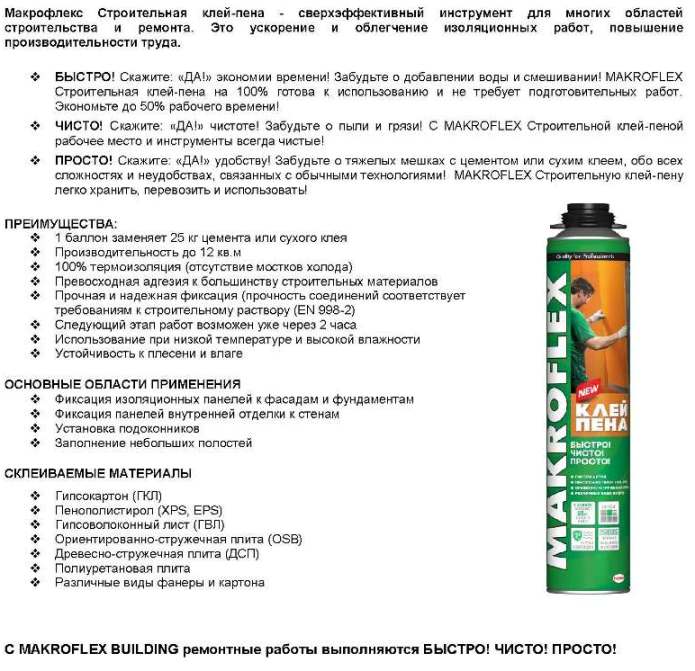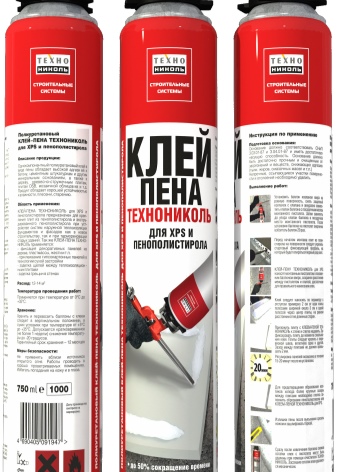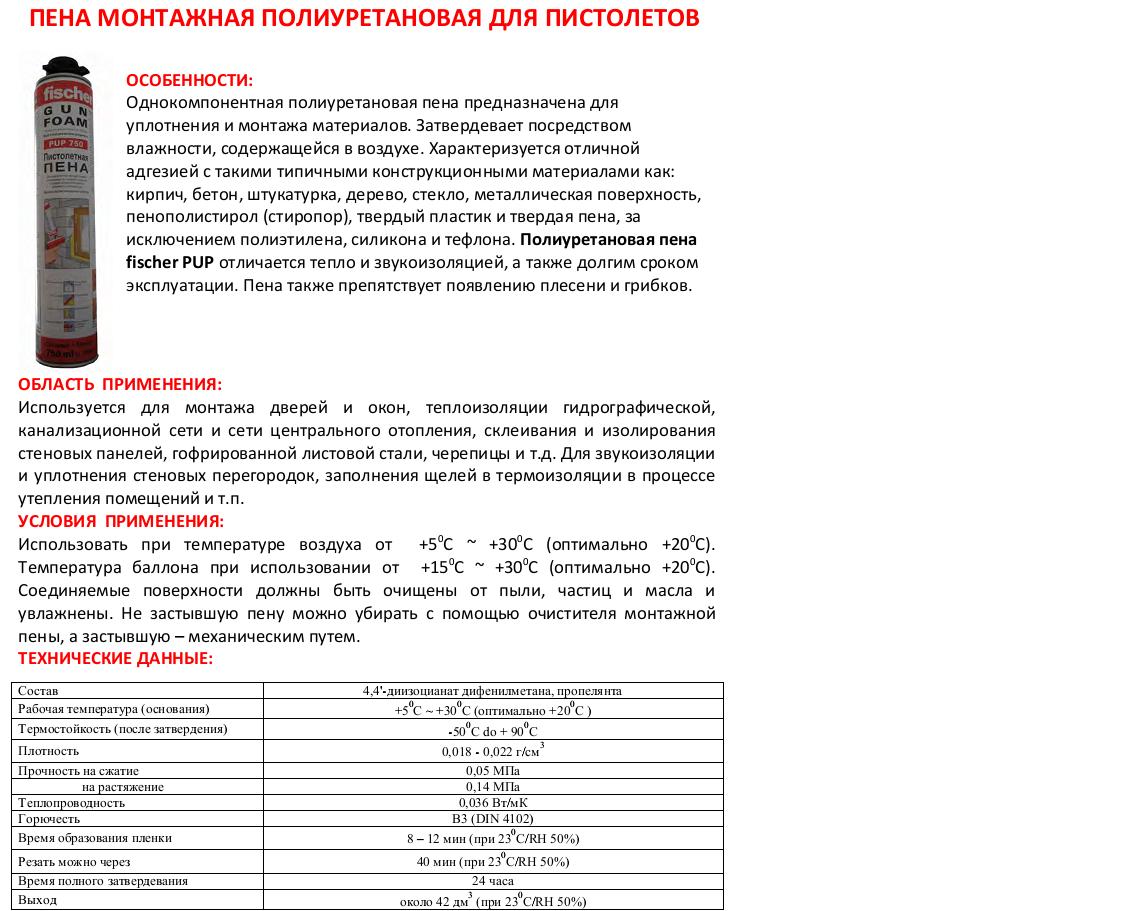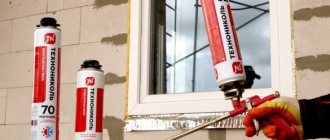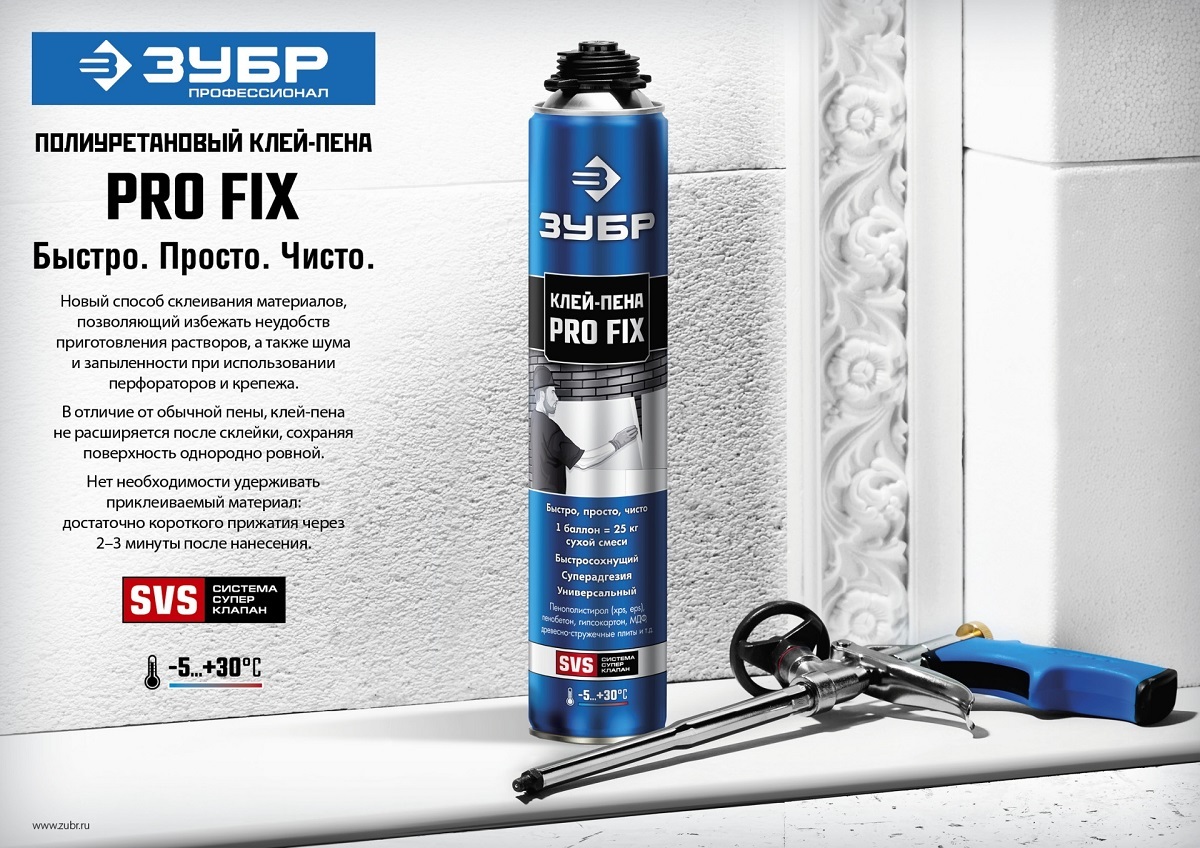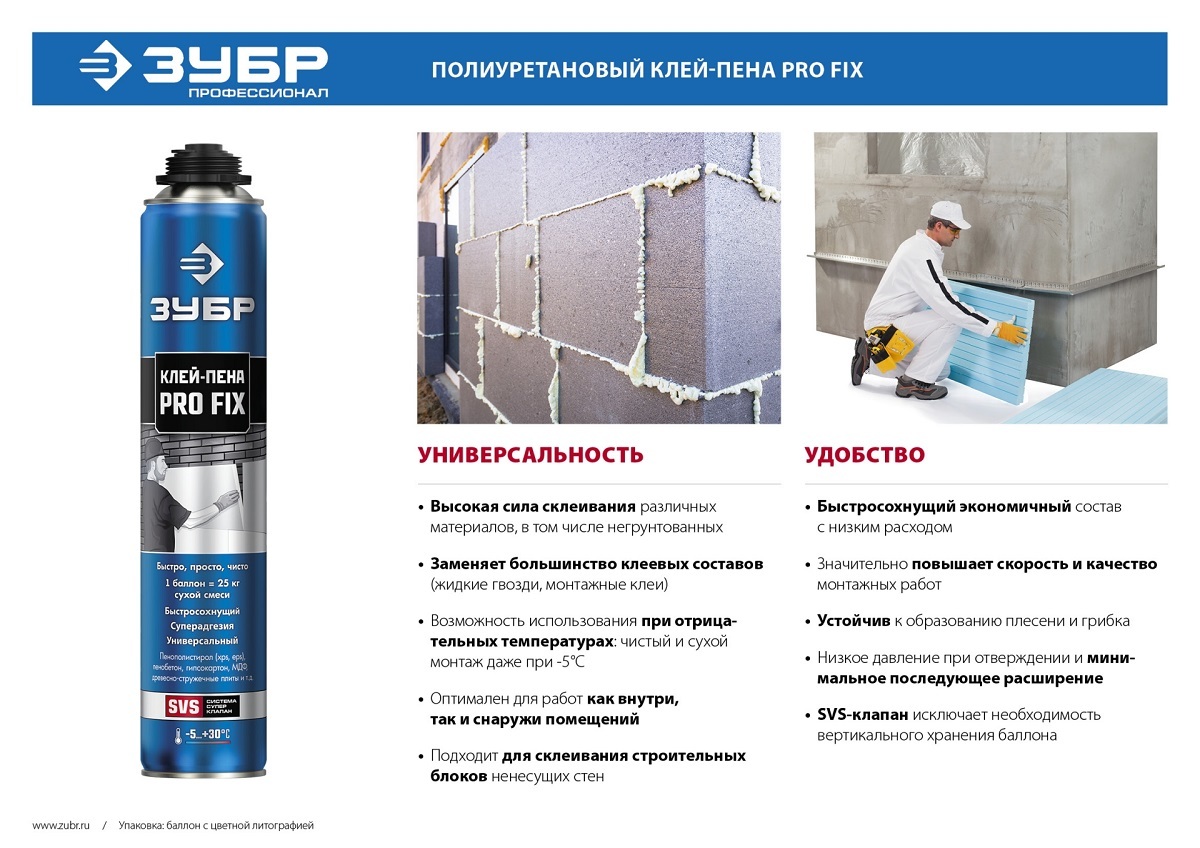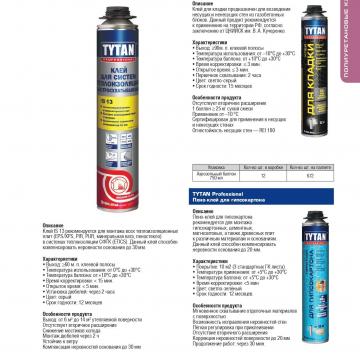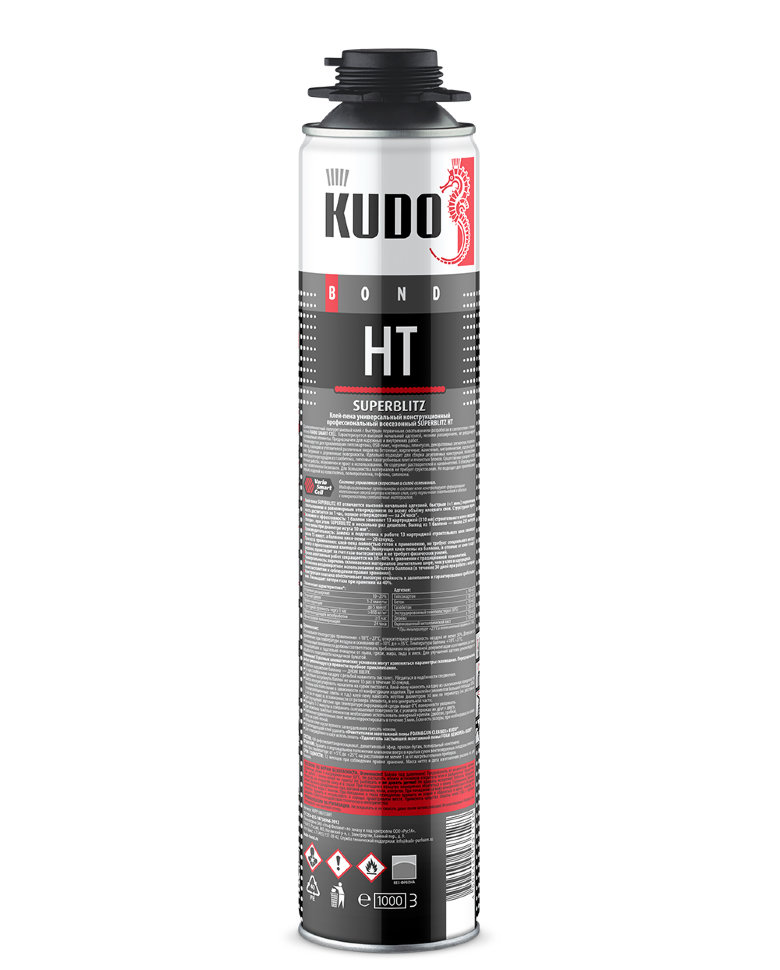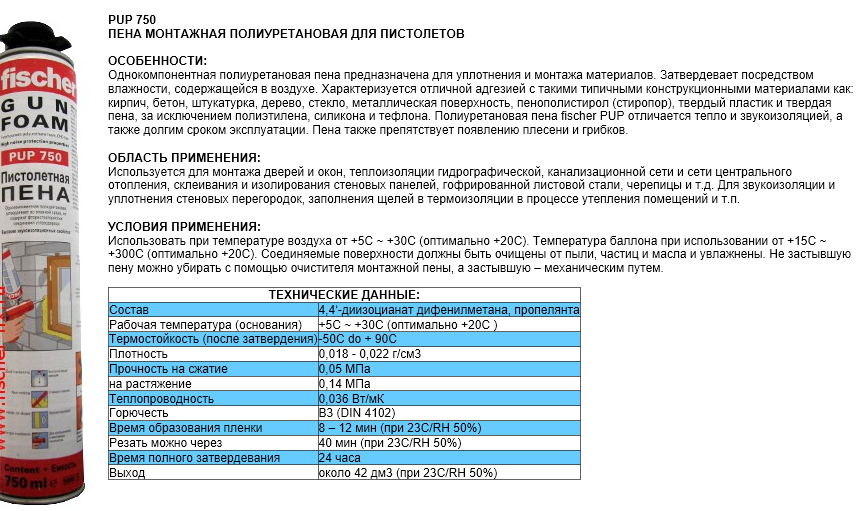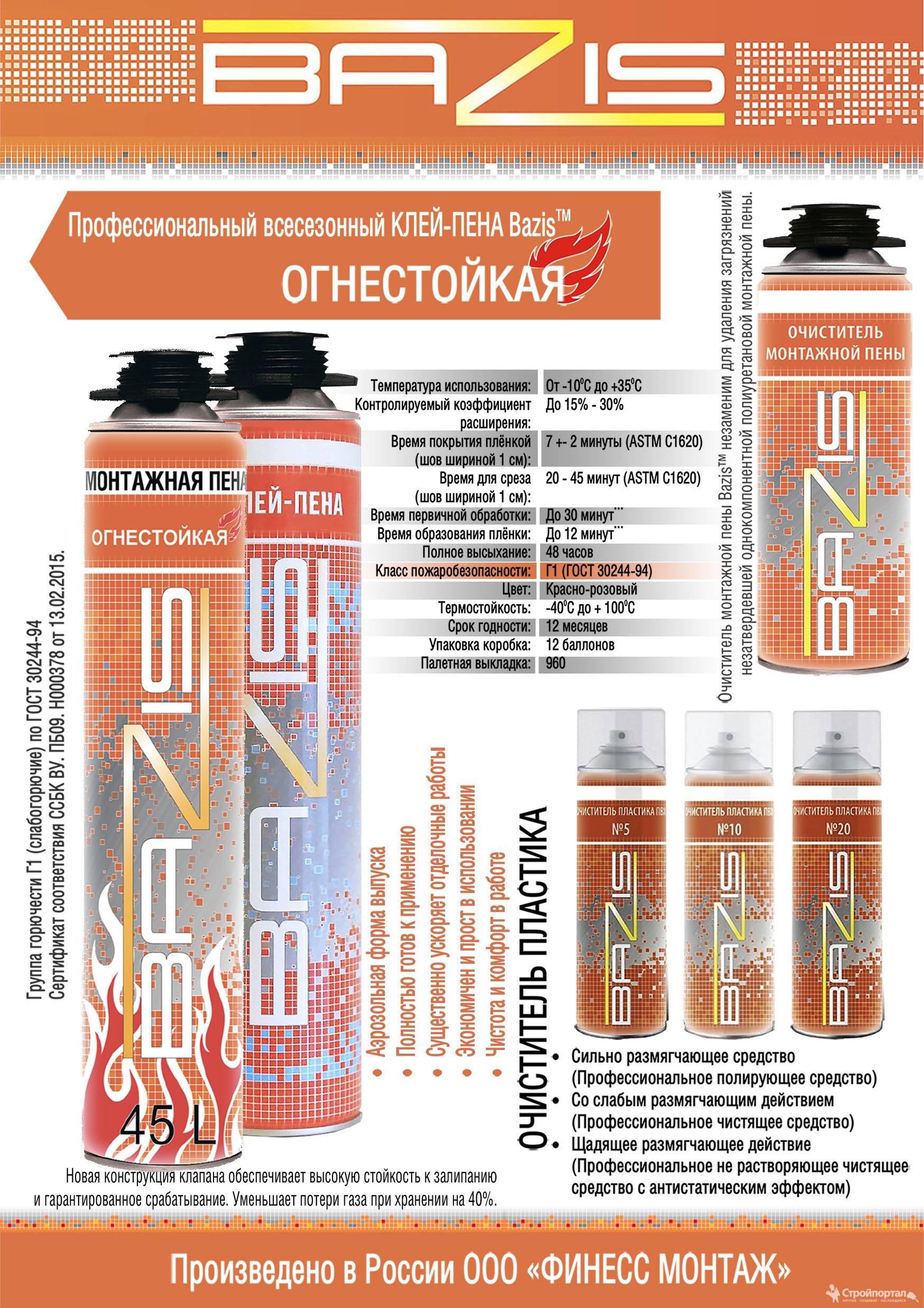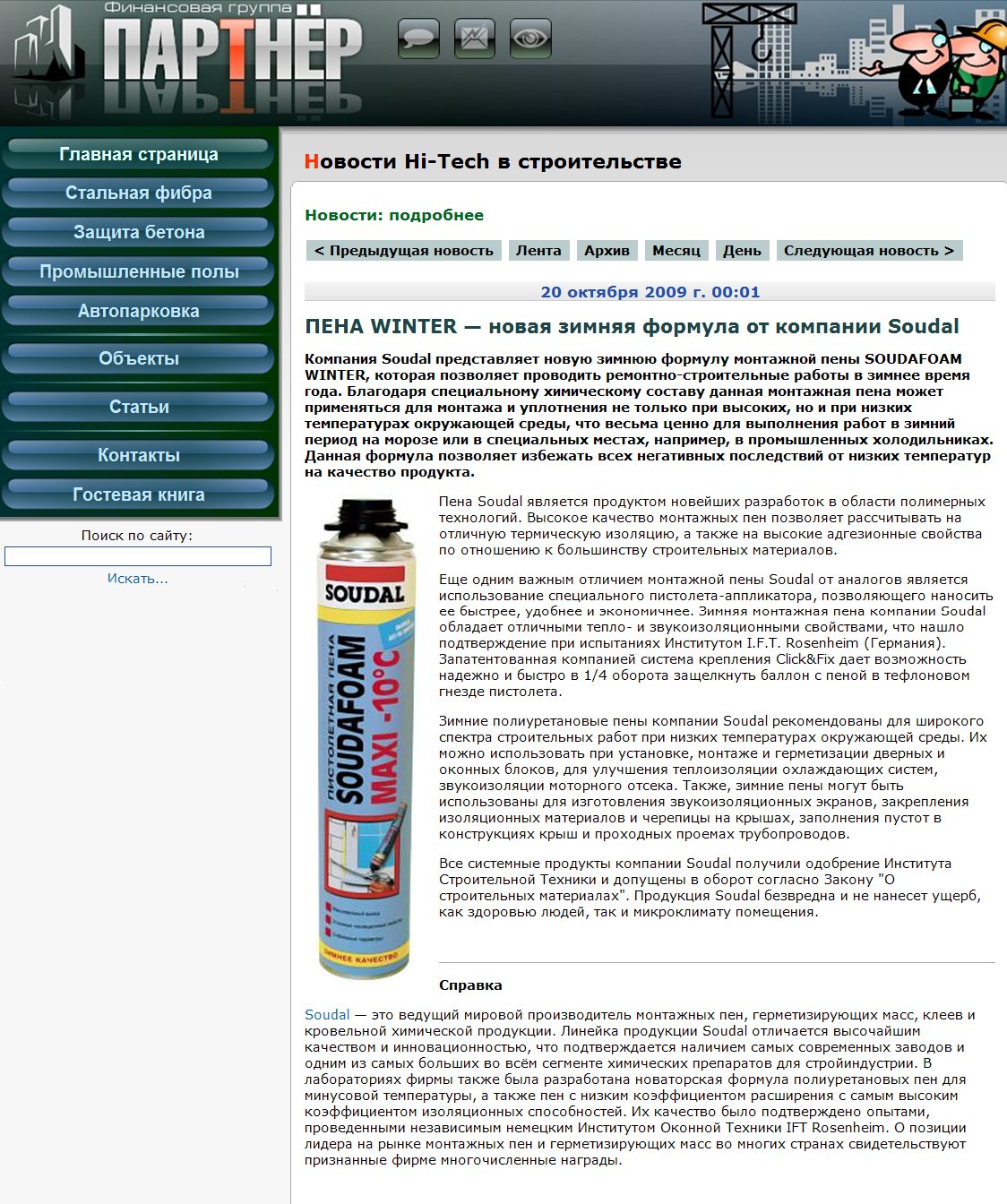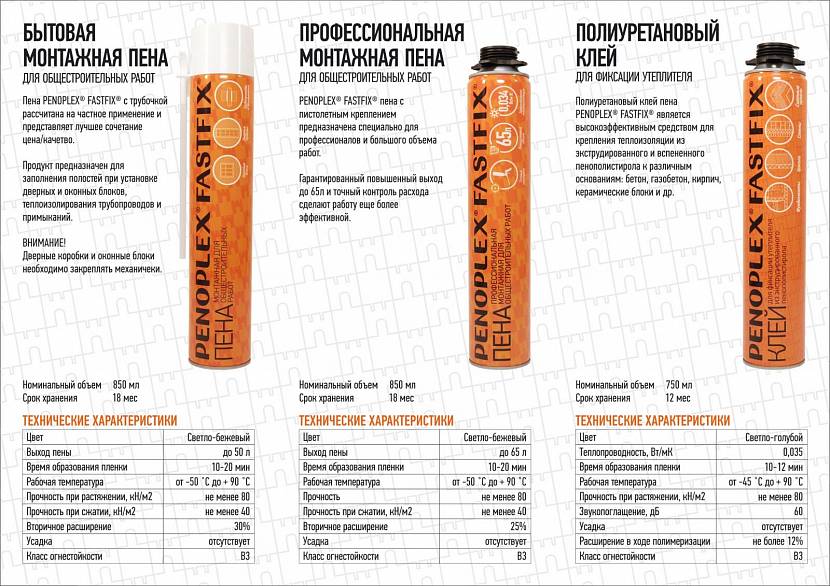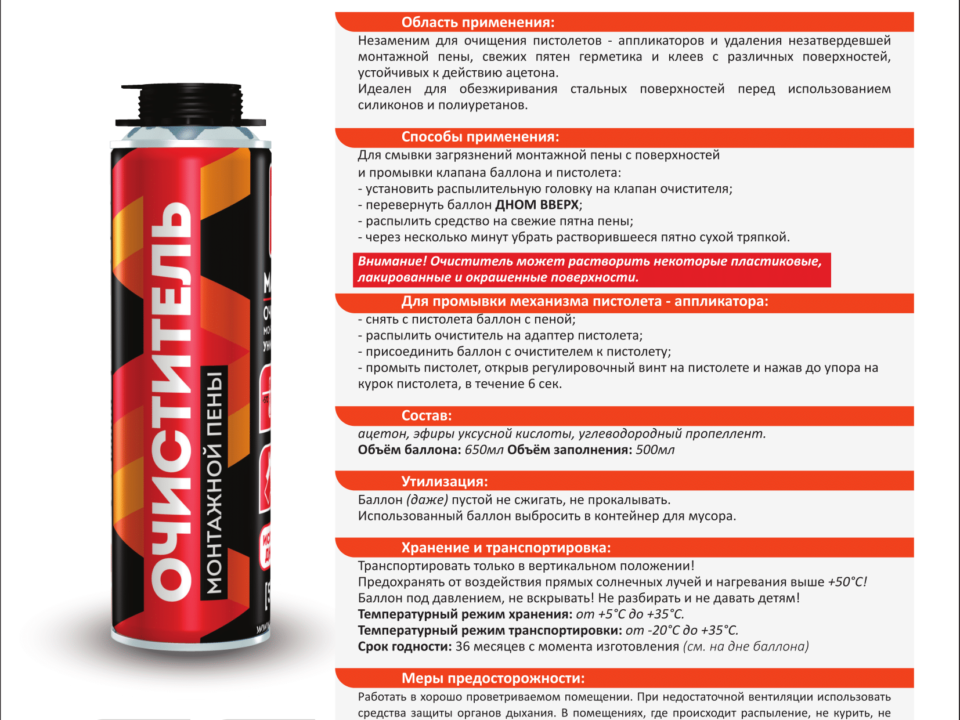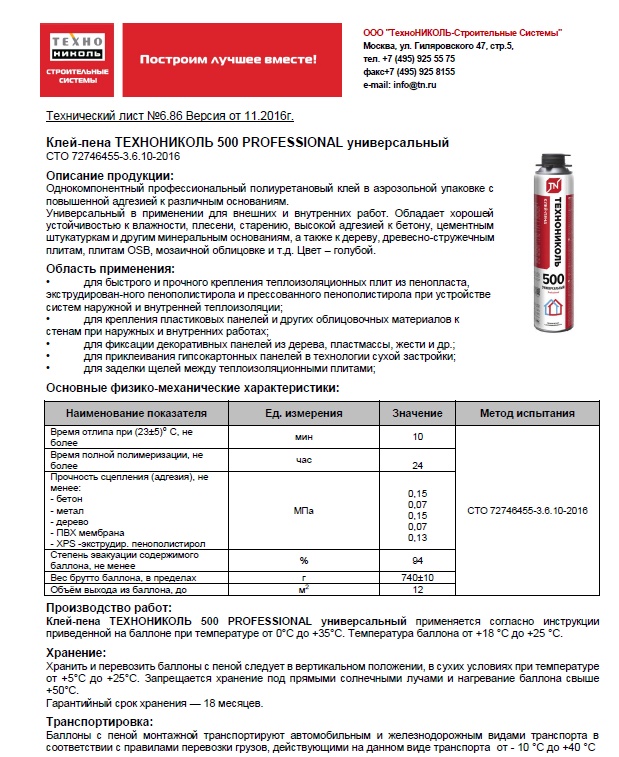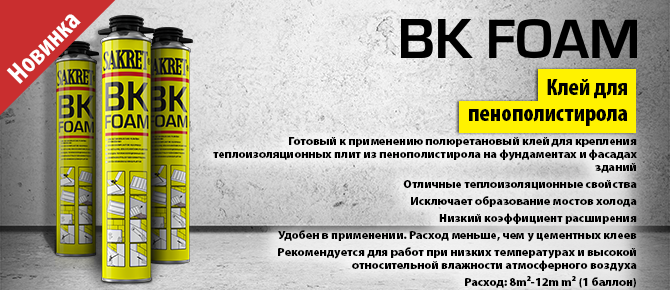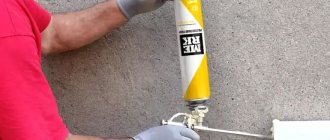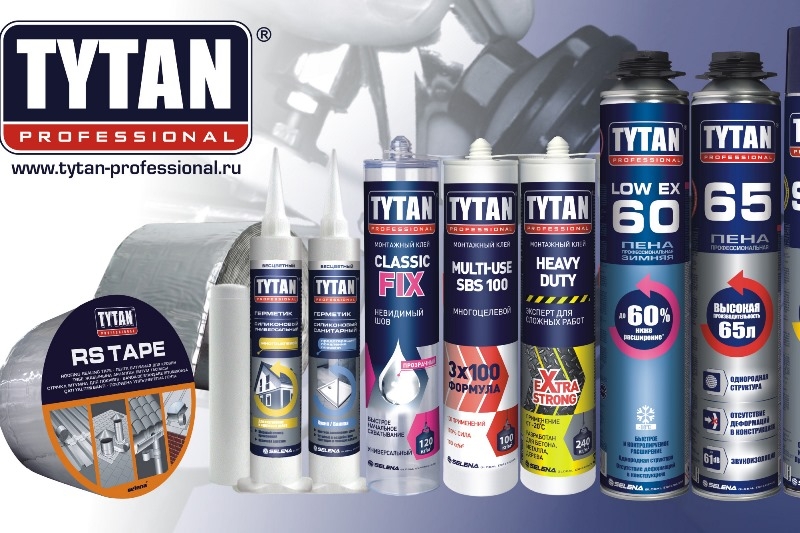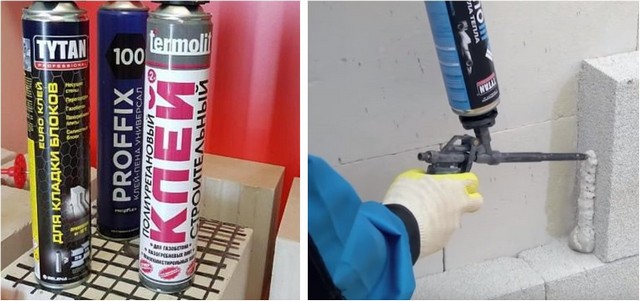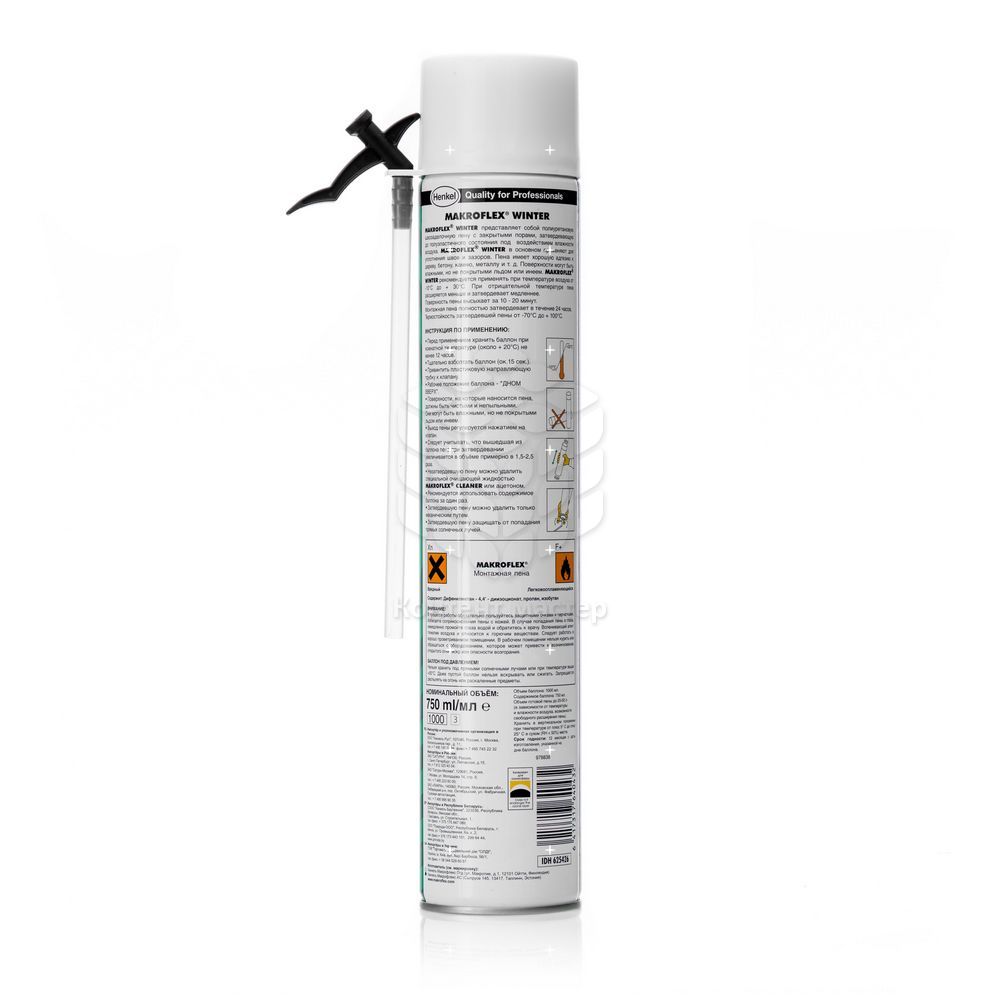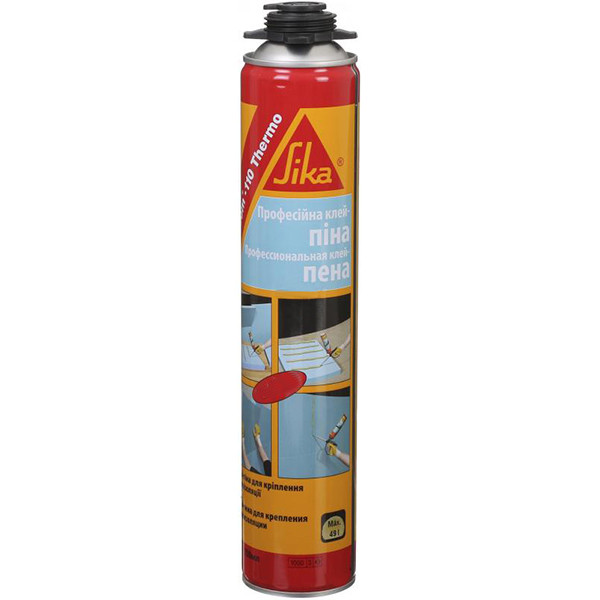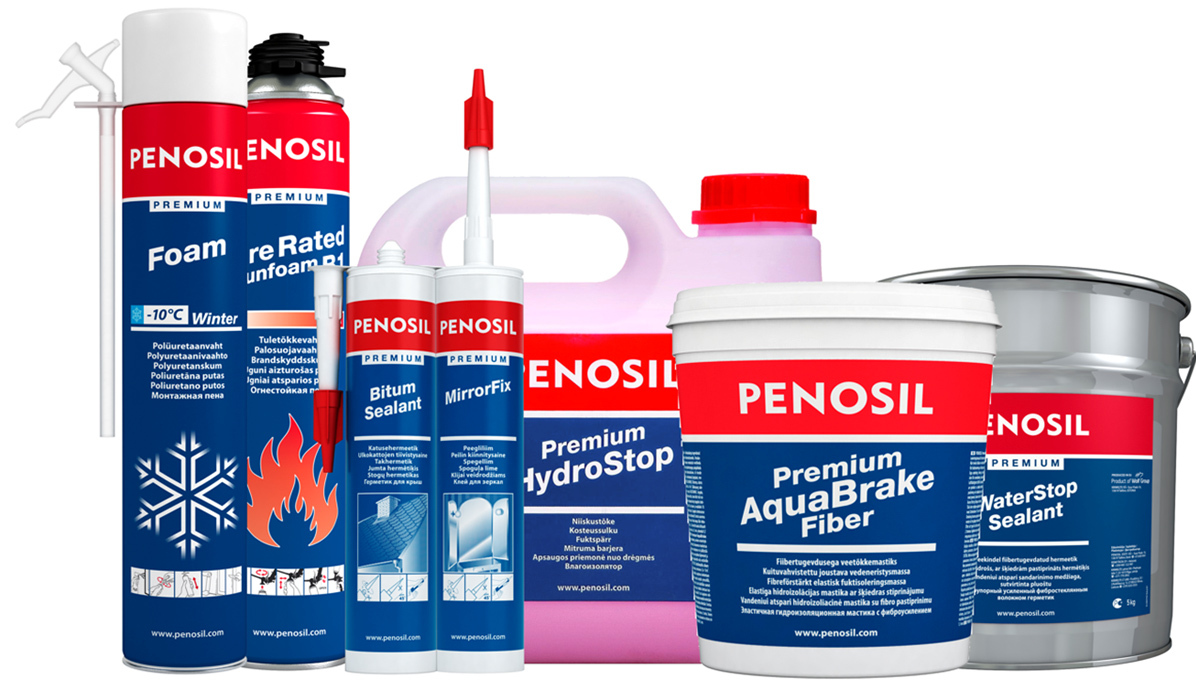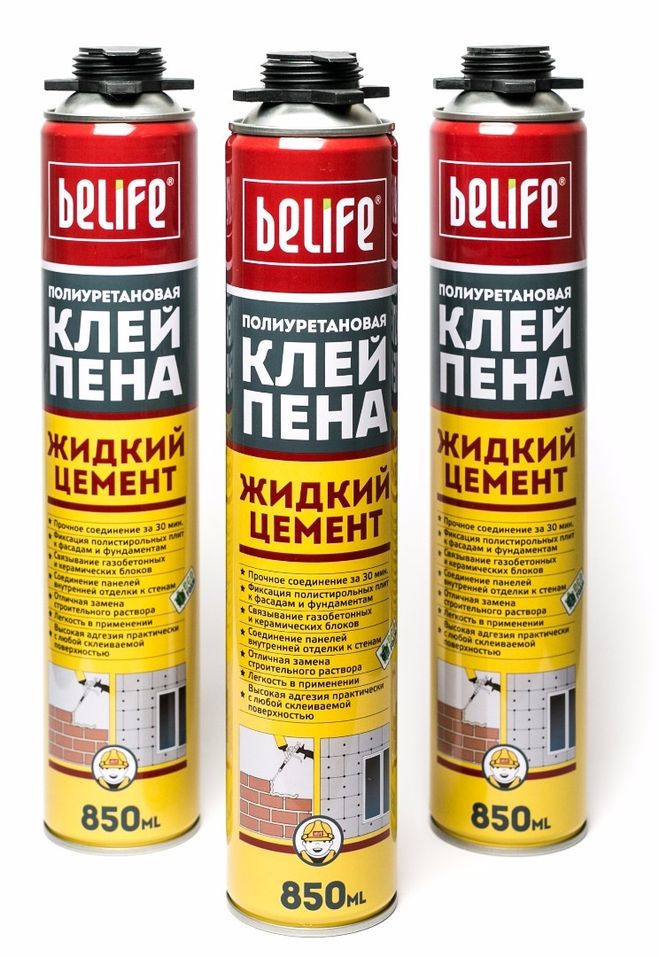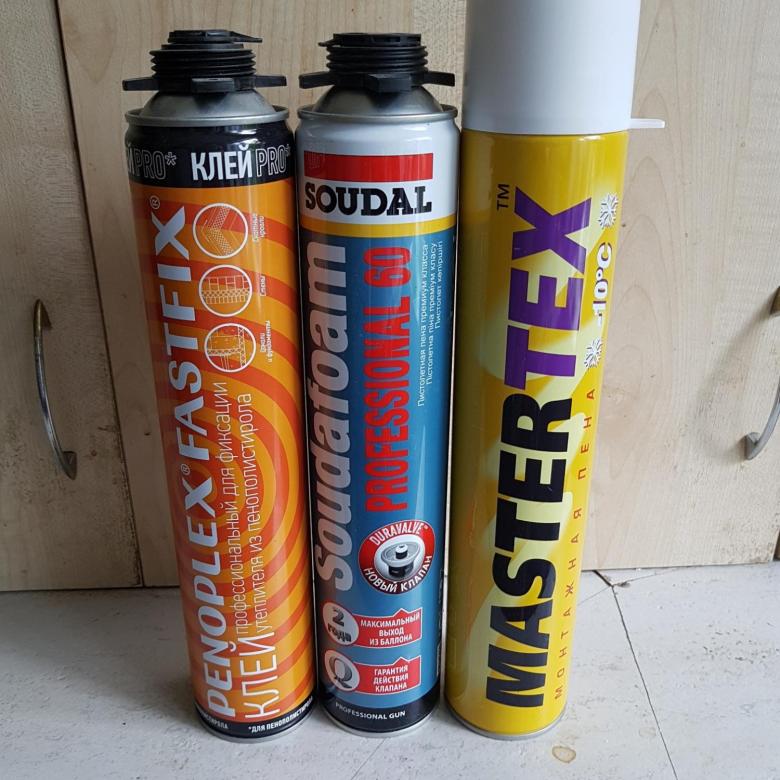Scopes of foam "Macroflex"
Foam-cement "Macroflex" has a variety of uses, suitable for outdoor and indoor use. It is ideal for filling small to medium-sized cavities, bonding building blocks, rebuilding block masonry and building lightweight lintels. Also "Macroflex" can be used for the following purposes:
- insulation of buildings;
- installation of windows, doors, window sills;
- installation of flights of stairs;
- cladding of various surfaces;
- elimination of gaps;
- filling seams;
- hardening of insulation;
- arrangement of interior partitions;
- fixing parts of structures;
- installation of panels on facades, foundations, interior decoration of premises.
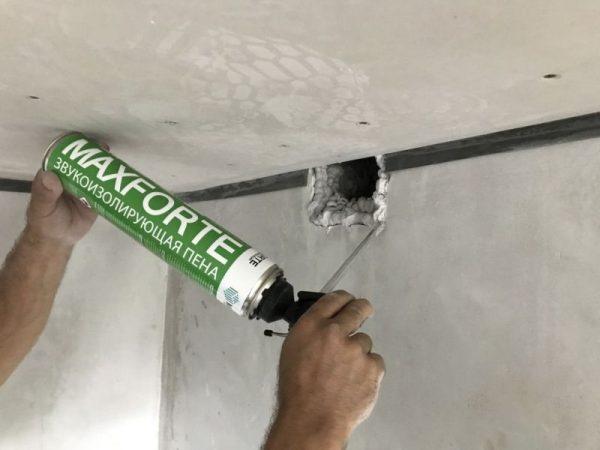
Foam cement shows a high level of adhesion to materials such as concrete, glass, ceramics, wood, foam concrete, plaster, cork, most polymer substrates. The foam also adheres well to coatings made of bitumen and foam, which seriously expands the area of its possible use. The tool is poorly suited only for drywall, mineral wool and galvanized substrates, since it does not achieve high adhesion rates with them.
Drying time
The time it takes for the foam to acquire a hard and dry texture is different and depends on several indicators:
- The manufacturer creates foam of various qualities. You can buy products that dry in different amounts of time.
- In order not to translate the product, remember that there are different types of drying, and each of them requires a certain amount of time. The surface layer hardens after about 20 minutes. You can only use the tool to remove excess foam after 4 hours, and the final hardening will take place no earlier than 24 hours.
- To accelerate the drying time, not only the base is sprayed with water, but also the applied composition itself.
Varieties of glue
In terms of composition, the basis for all funds is approximately the same. Adhesive for foam concrete blocks necessarily contains Portland cement, which ensures fast and reliable setting. Also in the composition, as in tile adhesives, there is fine quartz sand, which makes it possible to make seams of small thickness. Adhesives differ in the following components:
- modifiers (needed to prevent the appearance of cracks, increase the elasticity of the composition);
- polymer substances (required for higher plasticity, so that the adhesive mixture fills even the smallest irregularities in the masonry).
Also, adhesives for foam blocks are not the same depending on the laying time and can be winter, summer. Their differences:
- Summer adhesives work at + 5 ... + 30 degrees, contain white cement. After mixing, the solution retains its properties for a short time - up to 120 minutes.
- Means for the winter. The operating temperature range is -10 ... + 5 degrees. Such mixtures are frost-resistant, since they contain special "winter" additives. Dilute dry powder with warm water (about +60 degrees), use quickly - in 40 minutes.
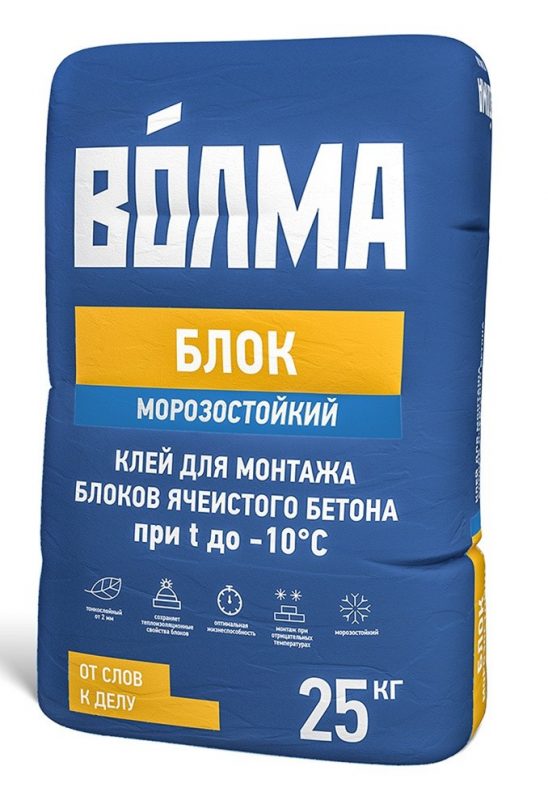
Purpose and scope of assembly foam Macroflex 750 ml
The foam canister is already ready for use, therefore, you can use it immediately after purchase. The main essence of its action is to expand and fill the entire space after application. Moreover, it can be used for any surfaces, since "Macroflex Pro" is distinguished by excellent adhesion to all materials, even if they are wet. Of course, the foam yield will depend on the general indicators of the environment - temperature, humidity, as well as the total volume of the filled space.
The most common actions for which an assembly tool is used are:
- Filling voids during construction, sealing any gaps during repairs;
- Increasing the level of noise insulation;
- Sealing joints between pipes and filling around the pipe space;
- Installation with subsequent insulation of doorways, frames and window sills, wall panels;
- Installation of roofing materials, which includes not only their joint, but also insulation.
The best adhesion surfaces for Macroflex Pro foam are concrete, stone, metal and wood. However, it perfectly shows its properties with plastic, as well as with glass. The most important thing is that there is no ice on the surface, since even moisture will not be an obstacle for the sealant to demonstrate its best qualities.
In some cases, construction foam "Macroflex 750 ml" technical characteristics will be indispensable in everyday life, especially if it is planned to carry out repair work, both large and small scale. For example, when replacing old wooden frames with plastic windows, which is popular today, one cannot do without using just such a hermetic material. An excellent option would be to use "Macroflex" when sealing cracks in the walls, if any are found under the old coating.
Often, polyurethane foam is used as insulation, due to its impermeability. For example, doorways are insulated for her at the entrance to a house or apartment. Due to its expansion, the foam perfectly fills all the space provided for it, subject to the availability of the appropriate environmental parameters (temperature, humidity, etc.).
Specifications
Such a sealant has a number of special characteristics that distinguish it from other compounds used in the construction and repair process. During the operation of the foam, the volume of the substance release is taken into account, which is measured in liters. This indicator is determined by the consistency of the foam (foaming), as well as the amount of substance that came out of the container.
The adhesion index characterizes the adhesion strength to the substrate. Various surfaces can act as a substrate, the most common are brick, concrete, plastic, wood. With these materials the adhesion values are very high, but with substrates such as oily surfaces, silicone, ice and synthetic materials, there is practically no adhesion.
Foaming is characterized by the boiling process of the substance in the container. It occurs due to the difference between atmospheric pressure and the pressure inside the cylinder. When the substance leaves the package, bubbles form. Due to the presence of silicone particles in the composition, the foam mass retains a certain shape. Lack of silicones can lead to a violation of the consistency of the composition when foaming.
The existence of porous components allows the bubbles to burst, while the contents of the bubbles do not leave the foam clot. Only excess propellant is removed naturally. There should always be a balance between the number of closed and open bubbles, its absence can radically change the structure and properties of the composition.
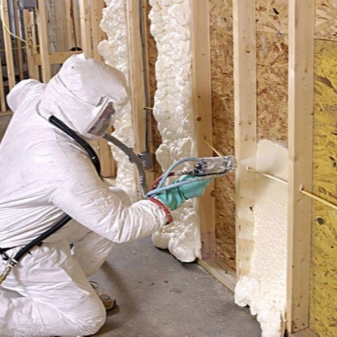

Expansion is a chemical process that occurs after foaming. It is the reaction of the prepolymer to the environment. As a rule, the foam substance comes into contact with moisture, during which carbon dioxide is released and polyurethane compounds are created. It is at this stage that the substance expands, filling the required areas. It is believed that foam manufacturers must carefully control this process so that excessive expansion does not occur, but many think that this property can significantly save material consumption during the repair process.
Secondary expansion is a process that occurs after the substance has polymerized.Most often, this process is precisely negative, since it affects the ease of use of the composition. Re-expansion can most often occur due to the influence of external factors, for example, an increase in temperature. But an important indicator is the origin of the gases that the manufacturer adds to the foam. Quality products, as a rule, are not subject to spontaneous expansion or shrinkage.


Some builders have noticed that the likelihood of secondary expansion increases with products that are produced in cylinders with a tube.
An important indicator of quality is the viscosity of the substance. It significantly determines the consistency of the composition and the degree of influence of temperature factors on it. With a sharp change in temperature, the viscosity is often violated.
The polyurethane foam has special thermal insulation properties. Its thermal conductivity is not very different from that of foam. Foaming agent is great for insulation, but it is usually used on a small area or on certain seams, because it will be quite expensive to insulate large spaces with foam.

Depending on the type of composition, the foam can have a different density. It is selected in accordance with the type of work planned, because this indicator varies for different procedures.
The characteristic color of the foaming sealant is light yellow. If the surface is not properly prepared, the color can change under the influence of sunlight and turn orange. This process significantly affects the life of the material. To prolong it, treat the material with putty or plaster.
The shelf life of products depends on the manufacturer. But on average, it varies from one to one and a half years. After this period, it is not recommended to use a sealant, because due to a change in properties, it can present surprises during operation.

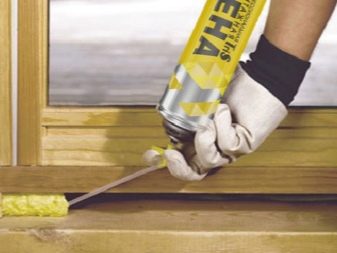
Ways of using polyurethane foam
In addition to temperature differences, polyurethane foam is divided into household and professional.
When using household foam, no auxiliary devices and tools are used. A small bottle comes with a plastic tube and an adapter lever. Usually it is used when there is a minor front of work. Household polyurethane foam is a practical solution at a relatively low cost.
Professional polyurethane foam is aimed at carrying out large volumes of work. To apply it, use a special assembly gun with a long tube. For this, professional foam cylinders are equipped with threads and valves. The tube of the gun allows you to conveniently and efficiently apply the material in hard-to-reach places. Thanks to the precise adjustment of the foam supply, the material is consumed much more economically in comparison with the household version. Immediately after use, the gun must be rinsed with a special tool called “polyurethane foam cleaner. This is to prevent foam from hardening inside the gun.
Types of polyurethane foam
Foam cylinder valve
What is polyurethane foam?
Manufacturers produce different types of polyurethane foam, which differ in composition, performance and scope.
Nevertheless, conditionally, the foam can be divided into (description of polyurethane foam):
Professional.
Cylinders with such foam are equipped with a special ring valve, which serves to screw the container onto the assembly gun. After the cylinder is attached to the tool, the foam under pressure enters the inside of the gun, where it rests on the valve, which is controlled by the trigger. Thanks to the use of a gun, the procedure for applying foam to the work surface is as comfortable and fast as possible. By pressing your finger on the trigger, you can control the pressure and direction.
Household.
The set of such cylinders initially includes a special plastic tube, which allows you to do the job without using an assembly gun. However, despite its simplicity and affordability, it is significantly inferior to professional foam in most parameters. In particular, it has a much higher secondary expansion rate and a lower output volume. Quite often, the gas in such cartridges runs out faster than the prepolymer. In addition, they are considered disposable, so they must be used at the same time, since the next day the containers become completely unusable. Thus, it is best to fork out for the purchase of an assembly gun, which costs in the range of several hundred rubles.
It is worth noting that household foam is categorically not recommended to be used for critical work, such as the installation of window and door structures, as well as window sills.
In addition, the composition of the polyurethane foam may differ in its composition:
One-component is familiar and available for general use.
Two-component - this type has a narrow scope and is not available on the free market. Since for its use it is necessary to mix two different compositions.
Also, depending on the temperature conditions in which the polyurethane foam can be used, it can be:
- Summer.
- Winter.
- All-season.
It should be noted that the composition of winter foam is significantly different from its summer counterparts. In particular, it can be used at low air temperatures, up to -20 ° C inclusive. Naturally, for its application in such frost, care should be taken to ensure that the temperature of the cylinder itself is positive.
In addition, the foam is distributed according to flammability classes and has the appropriate designations:
- B1 - refractory.
- B2 - self-extinguishing.
- B3 is flammable.
Of course, polyurethane foam, which has increased refractory properties, is considered the best.
Leading foam manufacturers
Many manufacturers produce quality products.
Consider several well-known brands:
- Titanium.
One-component polyurethane compounds are available in 750 ml cylinders, the line includes professional sealants and foams for domestic use. Flame retardant varieties are also produced.

Foam Titanium 65
Specifications: polyurethane foam Titanium 65:
- output: 65 l;
- operating temperature: -60 ... + 100 degrees;
- film formation time: 11 minutes;
- density of the sealant: 25 kg / m3.
- Moment.
The Moment Montage series is made on the basis of one-component polyurethane. Possesses good adhesion, resistance to moisture, excellent sound and heat insulation properties.

Sealant Moment Installation
Polyurethane foam Moment: Specifications:
- fire resistance class: B2;
- output - 65 l;
- temperature range: - 55 ... + 90 degrees.
The disadvantage of the sealant is the presence of secondary expansion.
- Soudal.
Sealants have high stability (no shrinkage and secondary expansion), good insulating properties, excellent adhesion.
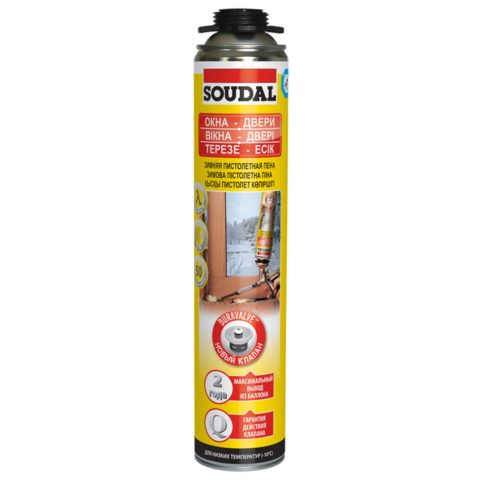
Soudal professional product
Soudal polyurethane foam: technical characteristics:
- output: 40 l;
- operating temperature: -40 ... + 90 degrees;
- film formation time: 10 minutes;
- density of the sealant: 26 kg / m3.
- Makroflex.
Durable, moisture resistant sealants with good adhesion and sound and thermal insulation characteristics, reduced secondary expansion. Professional and semi-professional versions of 750 ml formulations are available.

Professional sealant Macroflex
Standard foam characteristics:
- fire resistance class: B3;
- output: up to 50 l;
- temperature range: - 55 ... + 100 degrees.
- TechnoNIKOL.
One-component polyurethane material has good primary expansion and increased foam yield. Summer and winter formulations are available.
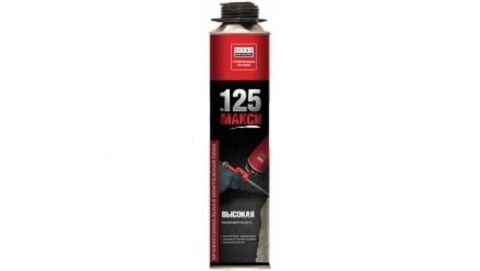
Professional product TechnoNIKOL 125 MAXI
Polyurethane foam TechnoNIKOL 125 MAXI: characteristics:
- sealant density: 25 kg / m3;
- output: 65 l;
- thermal conductivity at 25 ° C: 0.035 W / m * K.
For comparison, you can familiarize yourself with the characteristics of various formulations (pictured)
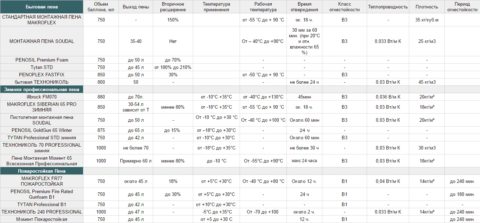
Polyurethane foam sealant (assembly foam) - technical characteristics of various brands
The advent of polyurethane foams has significantly increased the productivity of construction and renovation work. Thanks to a wide range of products, whether it is moisture-resistant foam for waterproofing, non-combustible sealant or standard formulations, you can choose the right option for various applications.
Pros and cons of Macroflex foam
Foam "Macroflex" is a one-component composition that is completely ready to use, it does not need to be mixed or diluted. Thanks to the packaging in the form of a tube, the foam is very convenient to apply - all you need to do is purchase a suitable assembly gun.
To work, you do not have to carry heavy bags, buy expensive tools and equipment, waste electricity, water, dilute dust and dirt. The absence of the need to mix the mortar significantly reduces time costs and helps to carry out construction and repairs an order of magnitude faster.
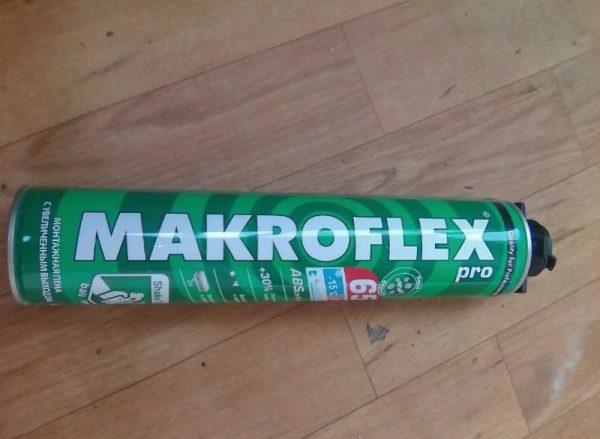
Other properties and advantages of the composition are as follows:
- high strength of any joints (no less than that of standard cement mortars);
- the ability to replace dry building mixtures in many situations;
- effective joining of homogeneous and dissimilar building materials;
- suitability for work with both horizontal and vertical surfaces outside and inside the premises;
- reliable sealing and insulation of seams from moisture and minimization of heat loss;
- short time to complete solidification;
- ability to withstand heat and freezing;
- the ability to carry out work at low temperatures;
- control of foam consumption due to the special design of the package;
- lack of chlorofluorocarbon propellants in the composition;
- low price and low cost of the work performed.
Foam-cement "Macroflex" effectively glues, seals, seals gaps, strengthens and provides moisture, sound, thermal insulation of structures, therefore it can be called a universal building material.
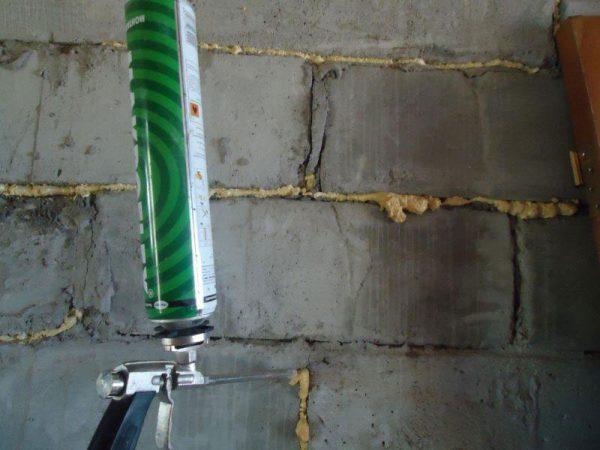
Despite the impressive list of advantages, foam also has disadvantages. "Macroflex" is a composition that, after hardening, is prone to shrinkage. However, due to the strong expansion after setting, this shrinkage is often unnoticeable.
Under the influence of ultraviolet radiation, the foam gradually collapses, but this minus can be smoothed out by protecting its upper layer with mortars, putties, and sealants. "Macroflex" cannot be used for the installation of load-bearing walls - the composition is suitable only for lighter structures.
The most important characteristics of the sealant
There are a large number of foam brands on the construction market. They differ in the components used in the production and in their characteristics, which can affect the quality of the sealing and the consumption of assembly foam per 1m of the interpanel joint or the processing of the window block.
Polyurethane foam: characteristics on which the scope of application and the price of the product depend:
Foam outlet
The volume of the substance that came out of the container is determined in liters. The amount of solidified product may vary depending on: temperature, humidity, wind, application technology. Professional formulations are often labeled with numbers that characterize the sealant yield, such as 50, 65, or 70.
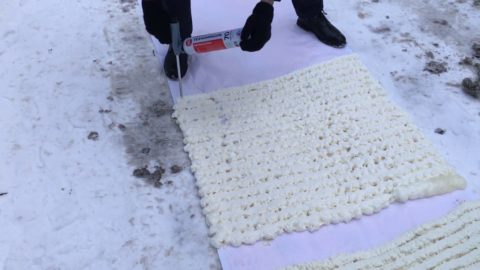
Polyurethane foam output
Adhesion
This characteristic shows the adhesion strength of the foam. Usually, the sealant binds well to building materials (concrete, brick, wood, plastic), but has poor adhesion to polyethylene, Teflon, silicone.
Porosity
The stability of the product largely depends on this indicator.In high-quality formulations, the percentage of closed pores cannot be less than 88% of the total amount.
Extension
After the foam leaves the balloon, its volume increases, which continues until the completion of the polymerization process. The good thing about the expansion is that the voids can not be completely filled, waiting for the foam to self-compact, which reduces the consumption of polyurethane foam. Excessive expansion is fraught with uncontrolled processes.
Secondary expansion
This indicator determines the ability of the sealant to change the spatial stability after the end of the polymerization that occurs in its upper layer. Quality products are not capable of spontaneous volume changes.
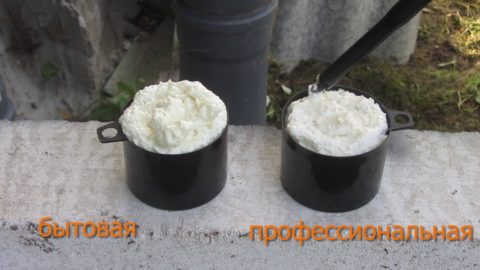
Comparison of the secondary expansion of the two formulations
Drying speed
Drying time is highly dependent on air humidity. A film on the surface of the applied foam usually forms within 8 ... 15 minutes. However, it is not recommended to touch the composition for several hours, so as not to violate the integrity of the film.
Cut off excess, putty, paint the sealant no earlier than a day after application.
Shrinkage
Professional formulations are usually characterized by a shrinkage of no more than 3%, while for household sealants this value can be up to 7%. Shrinkage in excess of 5% can lead to deformations, which will not allow sealing the joints.
Moisture resistance
For use in conditions of high humidity, waterproof foam is required for sealing. In such a composition, the content of surfactants is increased, which form solid bubbles, which prevents the penetration of moisture. But foams are more susceptible to secondary expansion and shrinkage depending on temperature changes.
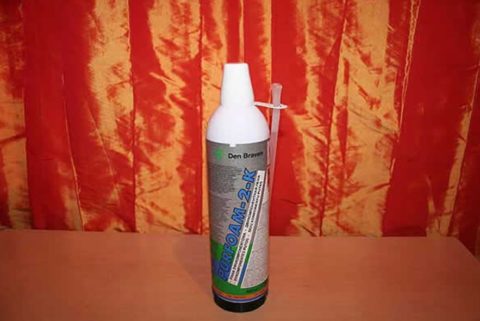
Moisture-resistant foam
Foam consumption calculation
To correctly determine the required amount of sealant for sealing joints, it is necessary to correctly calculate its consumption. To do this, you can use the online service "Consumption of mounting foam for 1m of a seam calculator", or have at hand "Consumption of polyurethane foam for 1 m of a seam: table".
When calculating the need for a sealant, it is necessary to know the thickness of the joint, its depth and the exit of foam from the cylinder. For example, having a sealant with a yield of 65 liters, you will need 2 foam cylinders to process a seam 10 meters long, 3 cm wide and 30 cm deep. The characteristic that the polyurethane foam possesses in this case: for 1 m of the seam, the consumption will be 0.2 cylinders.

Polyurethane foam: consumption per 1m p
In the same way, you can calculate the amount required to fill one cubic meter of joints.

Consumption of polyurethane foam per 1 m3 of seam
To determine the consumption of foam when carrying out, for example, installing window blocks, you can use the estimate documentation (GESN 10-01-047-01). It regulates the consumption of polyurethane foam per 1m2.
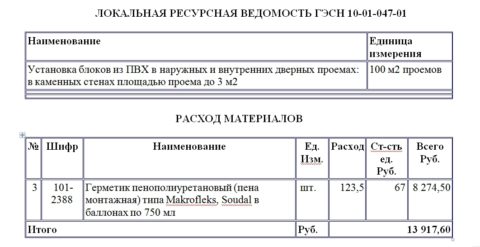
Extract from the resource sheet
The surveyors set the foam consumption per 100 m2 of openings in the amount of 123 cylinders with a volume of 0.75 ml. Accordingly, the characteristic that the polyurethane foam is endowed with is determined: the consumption per 1 m2 is 1.23 cylinders.
Mode of application
The key step is to use polyurethane foam. It is imperative to read the instructions for using the composition.
Its application includes several stages.
- If you do not want to spend a lot of time washing your hands after completing the work, wear rubber gloves. They will protect you from the inevitable skin impurities.
- The cap must be removed from the cylinder and, depending on the type of device, a special tube must be connected to the valve or the gun must be screwed on.
- To make the consistency of the substance in the container homogeneous, it is recommended to shake the composition thoroughly. Shake should be at least 60 seconds.
- The surface where the sealant will be applied should be treated with water.
- The container should be held so that it is located upside down, since this is the best foam delivery.
- Moving from top to bottom, fill in the gaps by 1/3. The remaining space will be filled during the expansion process.
- When the foam fills all the empty areas, it is recommended to spray it with water. This will speed up the final hardening process.
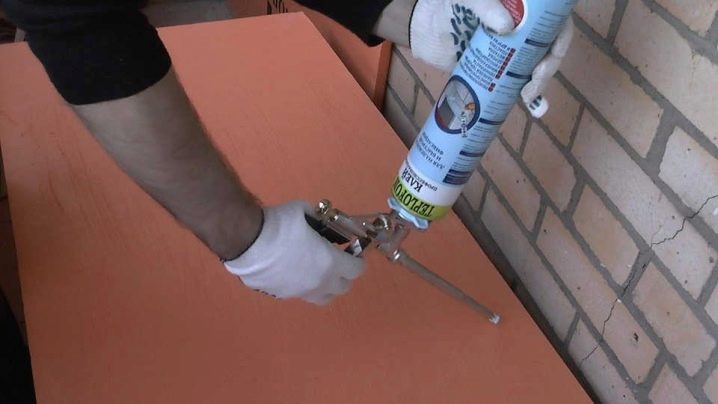
Tips & Tricks
Experienced craftsmen share tips for buying and using foam glue:
- The glue should not be liquid. You can check the consistency at the time of purchase. There are testers in stores. It is enough to squeeze out some glue to evaluate its consistency.
- When buying foam glue, you should look at the package for the density of its composition. The higher this figure, the higher the adhesive consumption will be.
- The label indicates whether it is possible to work with glue in the cold. The lower the number, the better. The fact is that compositions with a low temperature regime tolerate high temperatures just as well.
- When buying foamed glue, be sure to familiarize yourself with the contents of the container. It should not contain carbon dioxide and freons. A good indicator is the presence of isocyanate oligomers.
- The initial setting time is indicated on the packaging. The optimal rate is 10-15 minutes.
- Assess the degree of adhesion. The minimum indicator for concrete is 0.3 MPa, for expanded polystyrene - 0.8 MPa.
There are many tools for joining PVC boards to concrete and other surfaces. Foam adhesive specifically recommended for this purpose is the best solution.
Share link:
Foam properties
The properties of polyurethane foam allow solving a wide range of tasks for builders, window workers, plumbers, ordinary summer residents and many others. Let's highlight the most significant of them:
- Sealing is the main purpose of the polyurethane foam. Its sealing effect is especially useful for filling holes and cavities in concrete, drywall and masonry.
- The thermal insulation properties of polyurethane foam are due to its low thermal conductivity (from 0.019 W / m K. to 0.023 W / m K.). For example, a 2.5 cm thick layer of polyurethane foam has a thermal conductivity identical to a 19 cm thick wooden beam or a half meter thick brick wall.
- Soundproofing. As mentioned above, after curing, the polyurethane foam is a porous material. The pores are isolated cells and filled with air. Such a structure is a stable and effective barrier to the sound wave.
- The mounting properties of the foam are used for fastening and fixing structures made of metal, wood and PVC. For example, when installing window structures or for additional anchoring of water pipes.
Due to the above properties, polyurethane foam is in great demand, which in turn gives rise to no less number of proposals. On the market you can find a colossal number of items from dozens of manufacturers. Next, we will tell you how not to get confused in the assortment and choose exactly the product that meets all your requirements. Polyurethane foam differs in several types.
Scope of application
Construction foam has a number of important functions:
- sealing;
- soundproof;
- mounting (connecting);
- heat insulating.
Each of these functions is implemented in a specific area of use.
The main areas of application for building foam sealant include the following:
- Warming of premises of an economic nature. Polyurethane foam is often used to seal cracks when insulating garage doors or warehouses.
- Fixation of doors, wall panels, windows.
- Due to the fact that this material is characterized by additional waterproofing and soundproofing of the room, it is often used to fill various gaps when carrying out major repairs in residential premises.
- The material is often also used as an arches fastener in the interior.
